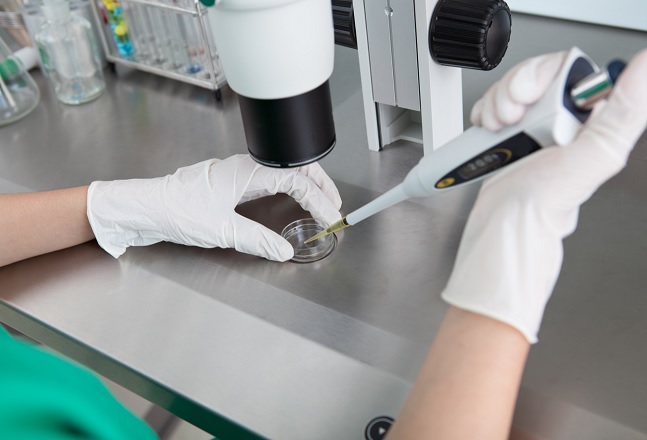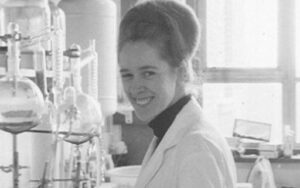 In the initial IVF cycle after the woman’s ovaries have been stimulated to produce extra eggs, fresh embryos are transferred. If there are more embryos than needed for this cycle, the extras are frozen for use in future IVF cycles.For many years, the prevailing wisdom in assisted reproductive technology (ART) has been that fresh embryo transfers are more successful than frozen embryo transfers (FETs), when FETs are thawed and transferred to a woman’s uterus. The thinking was that the best quality embryos would be selected for the fresh cycle to increase its chance of success, and that the remaining embryos, while still good quality, might not be as optimal as the ones used in the fresh cycle.Current data implies that this perception may need to change. The most recent information reported to SART, the Society for Assisted Reproductive Technology, for 2013, shows that for women 35 and over the percentage of transfers resulting in live births is actually higher for FETs than for fresh embryo transfers. What seems to matter most to success rates is the mother’s age at the time the embryos were frozen, rather than her age at the time of transfer.There haven’t been any research studies yet to determine why FETs are becoming more successful or if the procedure for IVF should change to using FETs exclusively. So if you are going for IVF, your first cycle will be a fresh one. If you need a second cycle and you have frozen embryos in storage, you will receive FETs. There are advantages and disadvantages to each.
In the initial IVF cycle after the woman’s ovaries have been stimulated to produce extra eggs, fresh embryos are transferred. If there are more embryos than needed for this cycle, the extras are frozen for use in future IVF cycles.For many years, the prevailing wisdom in assisted reproductive technology (ART) has been that fresh embryo transfers are more successful than frozen embryo transfers (FETs), when FETs are thawed and transferred to a woman’s uterus. The thinking was that the best quality embryos would be selected for the fresh cycle to increase its chance of success, and that the remaining embryos, while still good quality, might not be as optimal as the ones used in the fresh cycle.Current data implies that this perception may need to change. The most recent information reported to SART, the Society for Assisted Reproductive Technology, for 2013, shows that for women 35 and over the percentage of transfers resulting in live births is actually higher for FETs than for fresh embryo transfers. What seems to matter most to success rates is the mother’s age at the time the embryos were frozen, rather than her age at the time of transfer.There haven’t been any research studies yet to determine why FETs are becoming more successful or if the procedure for IVF should change to using FETs exclusively. So if you are going for IVF, your first cycle will be a fresh one. If you need a second cycle and you have frozen embryos in storage, you will receive FETs. There are advantages and disadvantages to each.Advantages of Frozen Embryo Transfers Increasing: Fresh vs. Frozen IVF Cycles
IVF is a fertility treatment in which eggs are fertilized by sperm in the lab. The fertilized eggs grow in special incubators to the point where they have enough cells to be transferred to the potential mother’s uterus. In the initial IVF cycle after the woman’s ovaries have been stimulated to produce extra eggs, fresh embryos are transferred. If there are more embryos than needed for this cycle, the extras are frozen for use in future IVF cycles.For many years, the prevailing wisdom in assisted reproductive technology (ART) has been that fresh embryo transfers are more successful than frozen embryo transfers (FETs), when FETs are thawed and transferred to a woman’s uterus. The thinking was that the best quality embryos would be selected for the fresh cycle to increase its chance of success, and that the remaining embryos, while still good quality, might not be as optimal as the ones used in the fresh cycle.Current data implies that this perception may need to change. The most recent information reported to SART, the Society for Assisted Reproductive Technology, for 2013, shows that for women 35 and over the percentage of transfers resulting in live births is actually higher for FETs than for fresh embryo transfers. What seems to matter most to success rates is the mother’s age at the time the embryos were frozen, rather than her age at the time of transfer.There haven’t been any research studies yet to determine why FETs are becoming more successful or if the procedure for IVF should change to using FETs exclusively. So if you are going for IVF, your first cycle will be a fresh one. If you need a second cycle and you have frozen embryos in storage, you will receive FETs. There are advantages and disadvantages to each.
In the initial IVF cycle after the woman’s ovaries have been stimulated to produce extra eggs, fresh embryos are transferred. If there are more embryos than needed for this cycle, the extras are frozen for use in future IVF cycles.For many years, the prevailing wisdom in assisted reproductive technology (ART) has been that fresh embryo transfers are more successful than frozen embryo transfers (FETs), when FETs are thawed and transferred to a woman’s uterus. The thinking was that the best quality embryos would be selected for the fresh cycle to increase its chance of success, and that the remaining embryos, while still good quality, might not be as optimal as the ones used in the fresh cycle.Current data implies that this perception may need to change. The most recent information reported to SART, the Society for Assisted Reproductive Technology, for 2013, shows that for women 35 and over the percentage of transfers resulting in live births is actually higher for FETs than for fresh embryo transfers. What seems to matter most to success rates is the mother’s age at the time the embryos were frozen, rather than her age at the time of transfer.There haven’t been any research studies yet to determine why FETs are becoming more successful or if the procedure for IVF should change to using FETs exclusively. So if you are going for IVF, your first cycle will be a fresh one. If you need a second cycle and you have frozen embryos in storage, you will receive FETs. There are advantages and disadvantages to each.
 In the initial IVF cycle after the woman’s ovaries have been stimulated to produce extra eggs, fresh embryos are transferred. If there are more embryos than needed for this cycle, the extras are frozen for use in future IVF cycles.For many years, the prevailing wisdom in assisted reproductive technology (ART) has been that fresh embryo transfers are more successful than frozen embryo transfers (FETs), when FETs are thawed and transferred to a woman’s uterus. The thinking was that the best quality embryos would be selected for the fresh cycle to increase its chance of success, and that the remaining embryos, while still good quality, might not be as optimal as the ones used in the fresh cycle.Current data implies that this perception may need to change. The most recent information reported to SART, the Society for Assisted Reproductive Technology, for 2013, shows that for women 35 and over the percentage of transfers resulting in live births is actually higher for FETs than for fresh embryo transfers. What seems to matter most to success rates is the mother’s age at the time the embryos were frozen, rather than her age at the time of transfer.There haven’t been any research studies yet to determine why FETs are becoming more successful or if the procedure for IVF should change to using FETs exclusively. So if you are going for IVF, your first cycle will be a fresh one. If you need a second cycle and you have frozen embryos in storage, you will receive FETs. There are advantages and disadvantages to each.
In the initial IVF cycle after the woman’s ovaries have been stimulated to produce extra eggs, fresh embryos are transferred. If there are more embryos than needed for this cycle, the extras are frozen for use in future IVF cycles.For many years, the prevailing wisdom in assisted reproductive technology (ART) has been that fresh embryo transfers are more successful than frozen embryo transfers (FETs), when FETs are thawed and transferred to a woman’s uterus. The thinking was that the best quality embryos would be selected for the fresh cycle to increase its chance of success, and that the remaining embryos, while still good quality, might not be as optimal as the ones used in the fresh cycle.Current data implies that this perception may need to change. The most recent information reported to SART, the Society for Assisted Reproductive Technology, for 2013, shows that for women 35 and over the percentage of transfers resulting in live births is actually higher for FETs than for fresh embryo transfers. What seems to matter most to success rates is the mother’s age at the time the embryos were frozen, rather than her age at the time of transfer.There haven’t been any research studies yet to determine why FETs are becoming more successful or if the procedure for IVF should change to using FETs exclusively. So if you are going for IVF, your first cycle will be a fresh one. If you need a second cycle and you have frozen embryos in storage, you will receive FETs. There are advantages and disadvantages to each.Subscribe to stay in the loop
Our newsletter delivers expert insights, practical benefit strategies, heart warming member
moments, and the latest in fertility and family-building news straight to your inbox.



